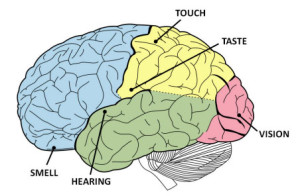Learning Styles

Learning Styles, 12/20/13, http://www.altedaustin.com/ blog/is-it-adhd-or-a-kinesthetic-learning-style.html
 Learning styles are different among students at Air Academy, causing teachers to have to change their style of teaching. Of the three learning styles, auditory, visual, and kinesthetic, visual and kinesthetic are the most common. The school has done things to help students with visual learning by buying Smart Boards for teachers. As for the minority of auditory learners, teachers have started recording lectures and putting videos online for students to view.
Learning styles are different among students at Air Academy, causing teachers to have to change their style of teaching. Of the three learning styles, auditory, visual, and kinesthetic, visual and kinesthetic are the most common. The school has done things to help students with visual learning by buying Smart Boards for teachers. As for the minority of auditory learners, teachers have started recording lectures and putting videos online for students to view.
However, there is no way a teacher can teach the same information three times to suit how each individual student learns; it’s impossible. So what can they do? Well as it turns out, not much. What I really should be asking is: what can you do? There are many resources outside and inside the classroom that can be helpful to you as a student. For starters, the most accessible resource is your teacher. Use Academy or lunch to go and get help if you need assistance. Another resource is the Internet. There are so many sites out on the web that can help explain concepts, or even quiz on subjects that are on the school’s curriculum. Sites like khanacademy.org teach or reteach subjects in math and science. Quizlet.com can help you study for English with virtual flashcards. What’s even better is that there is an iPhone app that’s free. Or you make up a game for studying; it’s a great way to have fun and practice for a test.Many teachers here at AAHS teach with a combination of visual and audio. Most English, social studies, and math teachers will have you take notes to help explain what they’re doing. Using this style is fine for me, but there are people who need the kinesthetic part of learning for the information to sink in. People like this usually excel in science classes, where on occasion the teacher will combine all three teaching styles over two or three days. This is due to the part of the brain where the information is processed. Usually for kinesthetic learners, going through the actions gives them a memory for them to recall back on in the future. Audio learners tend to have a larger audio cortex. A large audio cortex allows for listening to come “naturally” and doesn’t require much effort to retain information. Audio learners are usually video learners as well because of a nerve in the brain. The nerve connects the audio cortex with the visual cortex, making it so you can process what you see with what you hear.
So no matter what kind of learner you are, it’s up to you to decide what kind of tools help you with learning naturally. And always remember, your teacher is the most valuable resource inside the classroom. Everyone learns differently, so just find a way that works for you.


